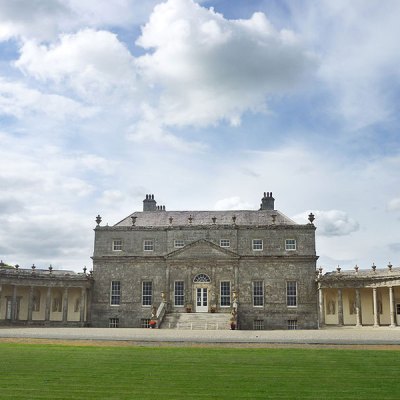Last November Ireland’s Department of Arts, Heritage and the Gaeltacht launched a document called An Action Plan for the Sustainable Future of the Irish Historic House in Private Ownership. The paper was produced after an advisory group (including this writer) had a series of meetings that considered how best to ensure the survival of what remains of the country’s once abundant but now rare ‘Big Houses’ still owned by individuals and families. In her Introduction to the Action Plan, Minister Heather Humphreys observed that these properties ‘are an important part of our social, cultural and architectural heritage,’ as well as being ‘an essential thread of our national story and a great source of local community pride.’ Furthermore historic houses are ‘a vital attraction for both local and foreign visitors and they play an important role in stimulating economic development, particularly at community level.’
Earlier this month the Browne family announced that Westport House, County Mayo, where they and their forebears have lived for almost 350 years, is to be offered for sale. In many respects the financial difficulties faced by the Brownes are no different from those which afflict anyone in possession of a large building and small income. But their specific problems arise from a bank loan taken out in 2006 by the late Jeremy, 11th Marquess of Sligo and secured on the 380 acres attached to the house; his plan was to deploy the money in a number of projects that would have generated additional and necessary funds for the estate. Before this could happen, however, economic recession struck and the loan accrued interest before eventually passing to the state-run National Asset Management Agency. Ironically, around the same time the government’s Action Plan was being launched, NAMA declared its intention to include Westport House’s debt in a much larger bundle of loans being sold to an American investment fund. Sufficient public outcry followed to ensure this did not occur, but left the Brownes and their debt in limbo: an uncomfortable position when interest charges continued to climb.
Westport House perfectly conforms to Minister Humphreys’ designation of the Irish historic property being a source of local pride, an attraction for domestic and overseas visitors and a key player in stimulating regional economic development. A report commissioned last year by Mayo County Council found the house and grounds attracted 162,000 visitors annually and contributed €1.7 million to the fiscal purse and local economy, with 60 per cent of respondents citing the Browne family home as their main reason for visiting Mayo. It is vital to the well being of the area, and is universally acknowledged as such. The problem here, as elsewhere, lies in the enduring myth that if an historic house opens its doors to the public, sufficient numbers of visitors will come and spend enough money to provide an adequate income. It is clear from the history of Westport and of Bantry House, County Cork, two of the very first houses in Ireland to go down such a route and both now in similar trouble, that such an approach is not financially viable: Ireland has too small a population to achieve the equivalent success of England’s National Trust with its millions of loyal members.
Westport’s predicament demonstrates how fragile Ireland’s remaining stock of historic properties is, how vulnerable to the vagaries of shifting circumstance, precisely because so few safeguards or supports exist to ensure they can weather past and future storms. Since last autumn there has been much discussion about the Brownes’ plight and periodic announcements that efforts are being made in both local and national government to ensure Westport House in its present form survives. The Irish are a nation of talkers, and it can sometimes seem as though talk is equated with action. Unfortunately while the talk continues, the Brownes and their financial advisors have watched a bank loan grow ever-larger: for these reasons the family felt obliged to put their house on the market.
The values espoused in its recent document by the Department of Arts, Heritage and the Gaeltacht ought to have lead to intervention, but at the moment political focus is primarily on a general election taking place at the end of the month. Nevertheless on Tuesday the Irish Times reported that Westport House ‘may be sold to a “benevolent investor” committed to maintaining it as a tourist attraction, if negotiations involving the State and the owners – the Browne family – are successful.’ In theory and if these negotiations are successful then the historic property would continue to attract visitors to the area, with attendant economic benefits for the community. But what of its private owners for whom last December’s government action plan proposed a sustainable future? That discussion also needs to take place, because the Brownes are as much part of Westport’s story as its pictures and furniture. Were the house to remain but they to go, Ireland would witness a further diminution of the national heritage and the loss of another ‘essential thread of our national story.’
Lead image: used under Creative Commons licence (CC BY-SA 3.0)



